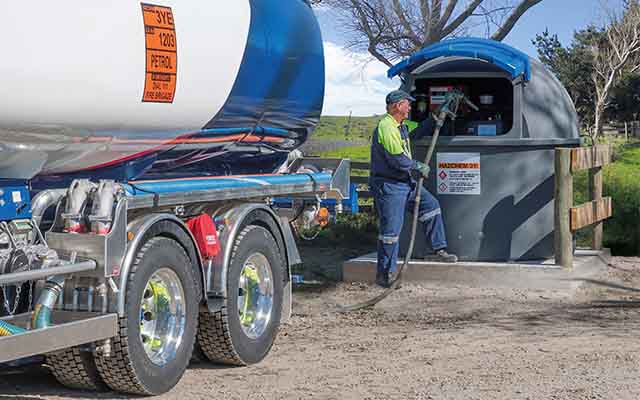A World Bank report suggests New Zealand’s carbon price may have to double if it’s to achieve the emissions reductions it’s agreed to under the Paris Agreement.
The study – State and Trends of Carbon Pricing 2022 – also warns that current carbon prices in NZ are at the bottom end of what is considered by some as reasonable and this in turn may expose exporters to risk from potential carbon border taxes.
The World Bank study looks at developments in carbon pricing, including carbon taxes and emissions trading schemes (ETS), around the world and including NZ.
It notes global carbon prices fell after the Russian invasion of Ukraine, but they have since stabilised and increased slightly, though there remain large differences in what is covered and the price itself.
Record ETS prices were seen in the European Union (EU), California, NZ, and the Republic of Korea, among other markets, while several carbon taxes also saw prices hit their highest levels yet.
The work includes an analysis of how high carbon prices must be to drive down emissions with the report saying: “On the whole, current prices remain short of levels needed to drive the transformative change needed to reach the 1.5°C target”.
The price of an NZU (the equivalent of a tonne of carbon on the NZ ETS) is about $77 (US$50).
The World Bank said the report of the High-Level Commission on Carbon Prices identified a US$50-100/ a tonne (or “carbon price corridor”) as the price needed by 2030 to keep global heating to below 2°C – the upper end of the limit agreed in the Paris Agreement – as part of a comprehensive climate policy package.
However, less than 4% of global emissions in 2022 are covered by a direct carbon price at or above the estimated range required by 2030.
The World Bank cites updated work which shows even higher prices may be needed to reduce emissions to net-zero by 2050.
The survey of 30 climate economists estimates prices of US$50-250 a tonne would be needed to meet the 1.5°C goal, with a median forecast of US$100.
The upper range of this estimate would be an NZ price of $386 and the median forecast would be $154.
It’s difficult to directly compare different prices internationally because they’re applied differently with different areas covered and varying forms of credits and exemptions.
But, for comparison, the World Bank noted Uruguay was at the top end with a direct carbon tax of US$137, the UK – US$99, and the EU’s ETS at US$87. At the other end of the scale, Japan, Singapore and Mexico have a carbon price of below US$5.
That report covers 68 carbon pricing instruments around the globe, but they cover just 23% of total global greenhouse gas emissions. This includes 37 carbon taxes and 34 emissions trading systems.
Despite suggesting a need for higher carbon prices, the World Bank also notes a “backlash” against rising energy prices, particularly when they’re perceived to disproportionately affect vulnerable populations.
The World Bank also notes that jurisdictions with higher carbon prices are increasingly considering cross border taxes. Those countries argue it will even the playing field for their businesses, while critics say it smacks of trade protectionism by another name.
The report says the EU has moved closer to adopting its Carbon Border Adjustment Mechanism (CBAM), and Canada and the UK are exploring options for similar mechanisms.
The International Monetary Fund and World Trade Organisation are also advocating for an international carbon pricing floor.
The EU’s proposal so far would effectively involve applying a carbon price to imports of certain goods to the EU, proportionate to the goods’ “embodied emissions”, or the emissions generated during their manufacture.
Importers of covered goods would be required to purchase emission certificates proportionate to their embodied emissions. The CBAM is intended to gradually replace the current free allocation of allowances as the main measure to combat carbon leakage (production and jobs moving to areas with low carbon prices) in the ETS.
The NZ government is looking at following a similar path, though the work is at an early stage.
Under the EU proposal, importers would be able to avoid or reduce potential costs imposed by the CBAM in some ways. Imports from countries that participate in the EU ETS, or have a domestic ETS linked to them, would be fully exempt.
Also, goods that are subject to a direct carbon price (that is, a carbon tax or ETS) in their country of origin would be eligible for a rebate equal to the price already paid before export.
The French presidency of the EU is aiming to get agreement on the measure among lawmakers by June 2022, though it’s unclear if this will be achieved.
The EU scheme is going to be difficult politically and in its technical application, not least because all countries have different ways of measuring, applying and charging their carbon price.
The EU’s key trading partners argue that strong climate policies, rather than only carbon pricing, should also be recognised.
However, the EU has so far been reluctant to recognise other policies, arguing that determining equivalency between policies is fraught with complications.
Whatever the outcome, it’s an increasingly likely possibility that those countries who want to trade with the EU will face barriers if they have low or no carbon prices on their exports there.










